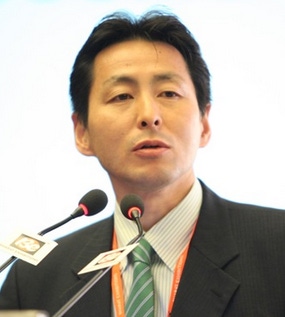Takehiro Nakamura, director of radio access network development for NTT Docomo, Japan is speaking in ‘The Future of LTE’ track on Day Two of the LTE World Summit, the premier 4G event for the telecoms industry, taking place on the 24th-26th June 2013, at the Amsterdam RAI, Netherlands. Ahead of the show we learn about how NTT Docomo is taking a lead in the development of LTE, with many of its home-grown technologies forming part of the latest 3GPP LTE standards.
May 8, 2013

Takehiro Nakamura, director of radio access network development for NTT Docomo, Japan is speaking in ‘The Future of LTE’ track on Day Two of the LTE World Summit, the premier 4G event for the telecoms industry, taking place on the 24th-26th June 2013, at the Amsterdam RAI, Netherlands. Ahead of the show we learn about how NTT Docomo is taking a lead in the development of LTE, with many of its home-grown technologies forming part of the latest 3GPP LTE standards.
When will you start trialling carrier aggregation and will you introduce it before the rest of LTE-Advanced’s other features?
Docomo has started to develop base stations utilising our own technology — advanced Centralized RAN (C-RAN) architecture for LTE-Advanced. These high-capacity base stations are capable of carrier aggregation and HetNet/eICIC, which will make them ideal for high-traffic areas such as train stations and large commercial facilities. These will be available around 2015.
Will the RAN enhancements that you’re planning for LTE Advanced also need improvements in backhaul?
Optical backhaul has been put to good use in urban and suburban area of Japan already and these will also be used for our high-capacity base stations. However, improvements in backhaul will be essential to meet the increasing requirements of the market in the future.
How are your plans progressing around VoLTE and RCS?
Commercial VoLTE service is under development at NTT Docomo, but no clear deployment plan has yet been decided.
How advanced are your small cells plans and what’s your strategy for integrating them into your network?
Our advanced C-RAN architecture will enable small cells (so-called “add-on cells”) for localised coverage to cooperate with macro cells that provide wider area coverage. This will be achieved with carrier aggregation technology, one of the main LTE-Advanced technologies standardised by the 3GPP. The add-on cells will significantly increase throughput and system capacity, while maintaining mobility performance provided by the macro cell. These add-on cell can be upgraded to improve mobility performance and other aspects, and these improvements are under standardisation for 3GPP Release 12, using the name “Phantom cell” – a concept proposed by Docomo.
The LTE World Summit, the premier 4G event for the telecoms industry, is taking place on the 24th-26th June 2013, at the Amsterdam RAI, Netherlands. Click here to download a brochure for the event.
Read more about:
DiscussionAbout the Author(s)
You May Also Like








.png?width=300&auto=webp&quality=80&disable=upscale)


_1.jpg?width=300&auto=webp&quality=80&disable=upscale)


.png?width=800&auto=webp&quality=80&disable=upscale)